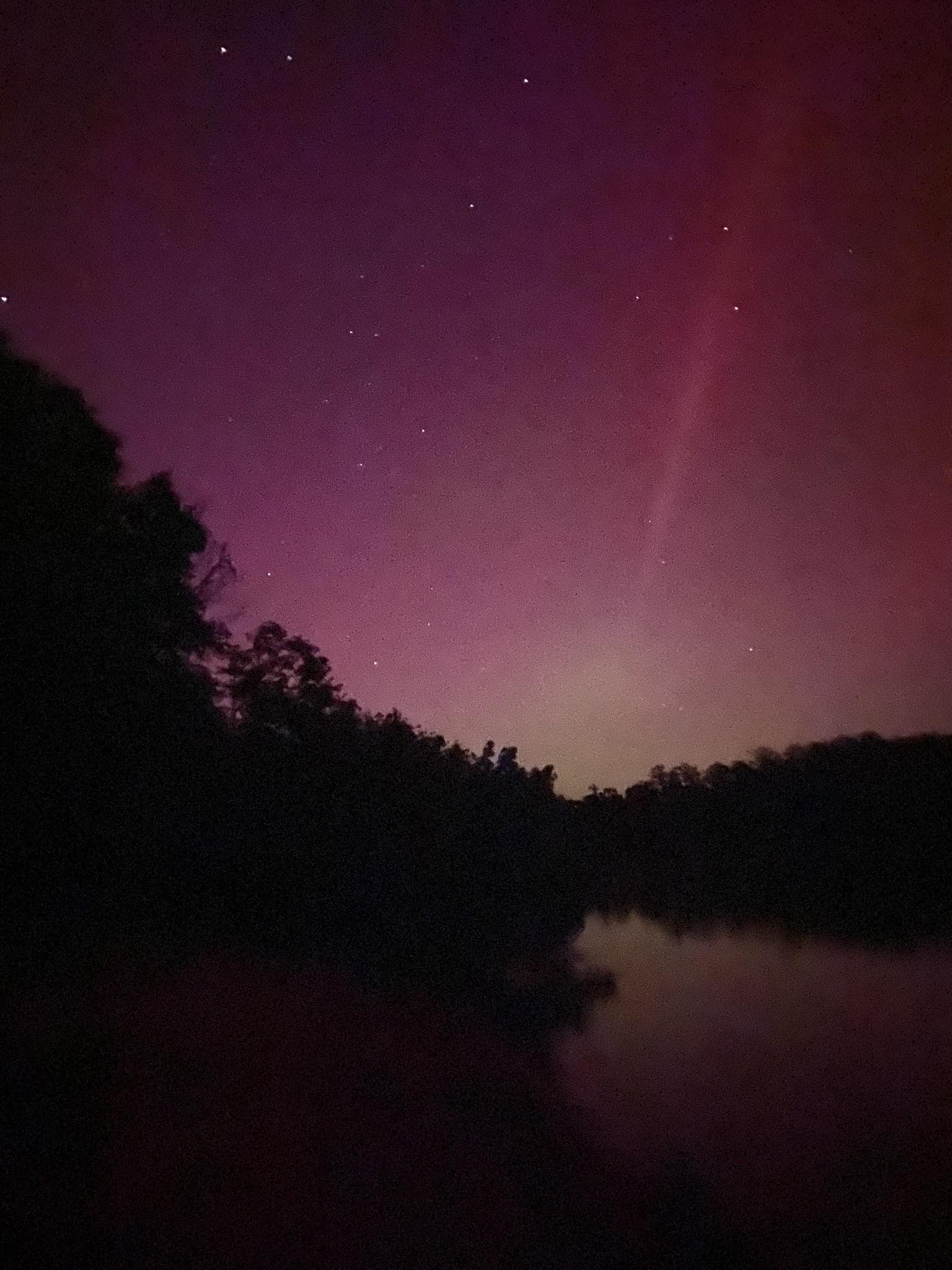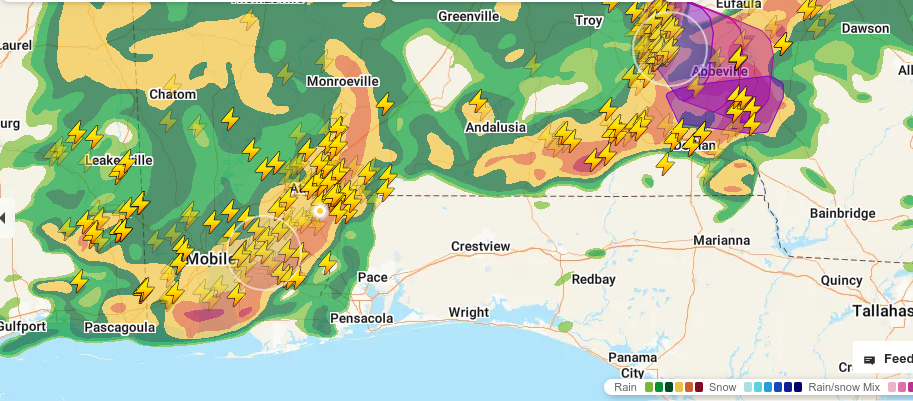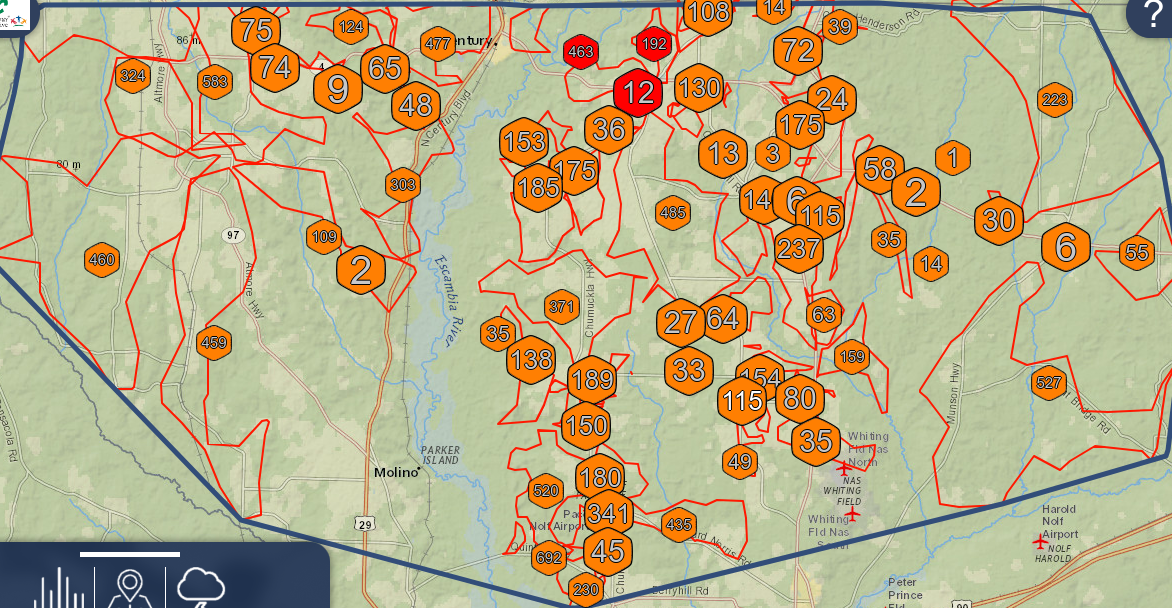I’ve been wondering, what effect, if any, would a solar storm have on my solar power system? In the 1800s, they had a doozy, which melted telegraph lines and caused all kinds of havoc in a world not yet much electrified. Well, we just had one. No big deal.
Most people are concerned with whether of not they can see the aurora borialis during a solar event. That’s the spectacular light show normally reserved for Canadians, Swedes and other northern dwellers. This time, we even saw a bit of it here in Florida, which means we got some of the other electromagnetic effects, too. So far, I have observed no issues, except for a solar path light that switched modes and iffy cell service. We are supposed to get a G3 hit tonight, so I want to take a look at the meters to see if they show anything happening in the dark.

My personal concern with magnetic pulses is from lightning. My Solar Shed is surrounded by tall pine trees, which all too often take a hit. A strike 100 yards away can easily induce a pulse into your solar power system and wipe out something expensive. Ask me how I know.
When I was a young broadcast engineer, we had towers, big metal lightning rods, just begging lightning to come visit our transmitters. A big transmitter with a normal operating voltage of 10,000 volts is not terribly bothered by such, but when the new-fangled transistorized transmitter was installed on one of the AM stations, there was trouble. That was long ago and I suppose they have worked that out. There were spark gaps at the towers to catch some of it, but there is some serious power in lightning. At WATM, Atmore, Alabama, the tower was literally within arms reach of the control room window. Standard operating procedure during a storm, there, was to put on a long record and leave the room. It got scary.
Transistors have a much smaller operating voltage than vacuum tubes and don’t handle a lot more, so Electro Magnetic Pulse (EMP) is a worry. Surge suppressors can take away the worry and proper wiring of your panels can take a load off the suppressors.
Did you know the electronic symbol for an antenna is a loop antenna, such was popular for radio 100 years ago and, more recently, for UHF TV reception. You DO NOT want a loop antenna to be attracting lightning to your system. If you have a string of solar modules, keep the positive and negative wires close together. Twisting them loosely together is even better. Spreading the wires out widely is just asking for trouble.
Many solar panel frames have a place to connect a ground. Use it. Connect to a ground rod.
I have surge protectors on outputs of my combiners with a dedicated ground rod. I have more suppression between the charge controllers and the inverter. Reason? Think of your inverter as an amplifier. If you have 24v battery and your inverter outputs 110/220, then a 100v pulse out of the charge controller will get boosted to 1000 volts out, which I know (for a fact) is more than your inverter’s transistors can handle. Many charge controllers and inverters have SOME protection, but MORE is better.
Finally, I have suppression on the output of the inverter. I had the internal regulator of a inverter, a feedback loop to increase output under load, quit working and voltage from the inverter tried to run up about 50% higher. Some simple Metal Oxide Varistors (MOV) I had attached, just because I had them, caught the surge and saved a lot of stuff in the house from getting fried.

Just before we had the big solar flare, we had an intense conventional storm come through and knock down service to 10,000 homes on our grid. FPL lost a lot too. I wonder if we would have seen issues on the grid, had it actually been working! No word from FPL if their thousands of acres of solar farm were in anyway affected. Patchy cell phone service seems to have been our biggest concern.

My take? Proper grounding and judicious application of surge suppression should take away any worries about effects of solar storms. Enjoy the light show.–Neal
